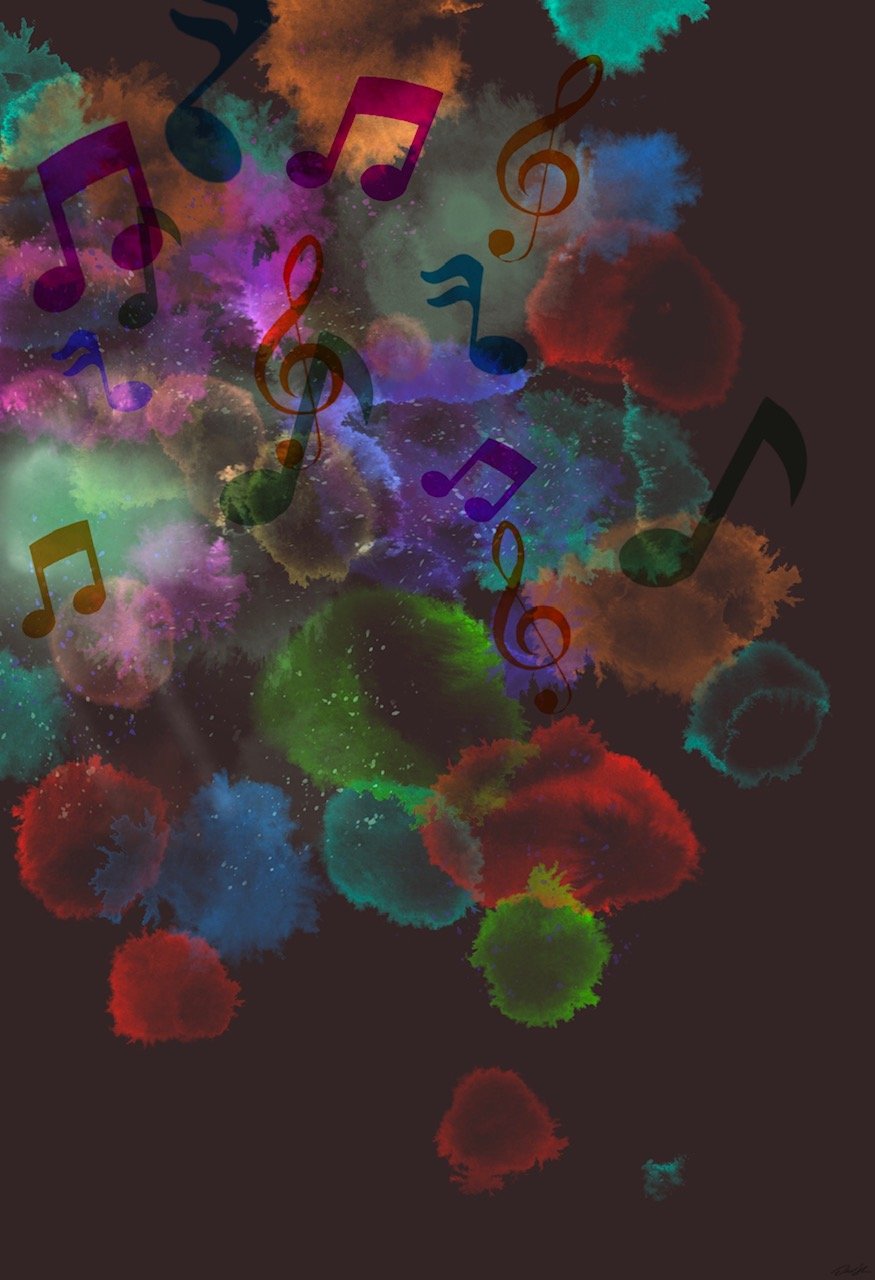Dr. Richard Rodda on the Season Theme, “Colors”
“Once I had a dream to live and love, and this dream became music. It touched all the beautiful experiences I have searched for or known. Each sound was a color, and each color was a warm feeling, and my heart kept the tempo.”
— Les McCann, American jazz pianist and vocalist
Artwork by Darius Steward
Color and music speak ineffable languages that share the power to excite feelings and sensations beyond mere words. “The thoughts which are expressed to me by music that I love are not too indefinite to be put into words,” Felix Mendelssohn wrote to a friend in 1842, “but, on the contrary, too definite.”
Musicians constantly consider not only the “timbre,” the “tone color,” that distinguishes instruments and voices, but also the infinite gradations of sound that shape the expressive effect of a performance. Some tone color changes are obvious, as when brasses or strings “mute” (“change,” as in mutation) the sound by affixing a device to the instrument. Most color changes, however, are the result of the artistic sensibility that determines the handling of an instrument — The Rite of Spring and Daphnis et Chloé (premiered in Paris one year apart) have comparable orchestras but inhabit very different worlds of tone color.
Some artists have “synesthesia” — a phenomenon in which stimulation of one sense triggers a response in another. Russian painter Wassily Kandinsky saw music as color, line and form. French poet Arthur Rimbaud wrote a verse about the colors of the vowels. Taste for Marilyn Monroe triggered colors. Franz Liszt, Richard Wagner, Olivier Messiaen and Duke Ellington linked sounds to colors. Russian composer Alexander Scriabin claimed a powerful synesthesia that led him to construct a clavier à lumières (“keyboard with lights”) that could wash
a hall with color to accompany his tone poem Prometheus: The Poem of Fire. (The Cleveland Orchestra, conducted by Louis Lane, programmed Prometheus with lights in December 1971. The music was thrilling. The lights, not so much.)
Composers have sometimes been direct in noting the influence of color on their music. Sir Arthur Bliss composed A Colour Symphony in 1922: Purple (“colour of amethysts, pageantry, royalty and death; slow and majestic”), Red (“rubies, wine, courage and magic; a glittering scherzo”), Blue (“sapphires, water and melancholy; slow, depicting lapping water”), Green (“emeralds, spring and victory; a double fugue”). In the 1980s, American composer Michael Torke wrote Ecstatic Orange, Bright Blue Music, Purple and six other “color pieces” for ballets. CityMusic Cleveland this season presents Don Chaffin’s Doors (on September 16), inspired by photographs of doors in Albuquerque, which closes with Blue Door Blues. Libby Larsen’s Yellow Jersey (May 13) refers to the color of the leader’s shirt of the celebrated Tour de France; the piece depicts “a short wind sprint for two clarinets.”
On October 27-30, the return of the CityMusic Orchestra after more than two years opens with Starburst by Jessie Montgomery, Resident Composer of the Chicago Symphony and one of the country’s most in-demand musicians. Montgomery’s description of that work can serve to summarize CityMusic’s 2022-2023 season: “Starburst is a play on the imagery of rapidly changing musical colors. Exploding gestures are juxtaposed with gentle fleeting melodies in an attempt to create a multidimensional soundscape.”
-Notes ©2022 by Dr. Richard Rodda

